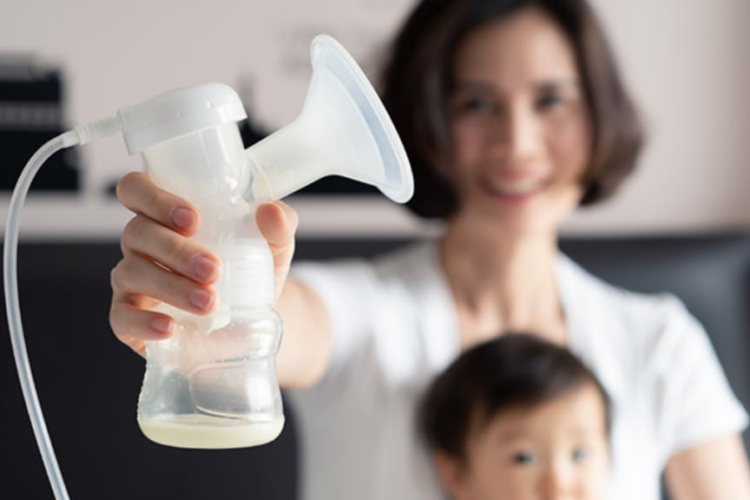Breastfeeding offers many benefits for both babies and parents, but it can be challenging—especially for those who need to pump milk. A good breast pump provides flexibility, allowing parents to pump at home, at work, or on the go. However, high-quality breast pumps can be expensive, with some costing hundreds of dollars.
The good news? Many health insurance plans cover the cost of a breast pump, thanks to the Affordable Care Act (ACA). If you have health insurance, you may qualify for a free breast pump through insurance, making it easier to provide breast milk for your baby without the added financial stress.
Understanding Your Breastfeeding Health Insurance Benefits
Under the ACA, most health insurance plans must cover breastfeeding support, including breast pumps and lactation counseling. This means that if you have an insurance plan through the Health Insurance Marketplace or other qualifying coverage, you can get a breast pump at no cost to you. The only exception is for “grandfathered” plans, which are older insurance policies that existed before the ACA was enacted in 2010.
While the ACA requires coverage, the details depend on your specific insurance plan. Your plan may cover:
- A rental breast pump or a new one that you can keep
- A specific type or brand of breast pump
- The pump before or after your baby is born
Some insurance providers may require a doctor’s prescription or pre-authorization before you can receive your pump. To find out what your plan covers, call the number on the back of your insurance card or check your provider’s website.
Types of Breast Pumps Covered by Insurance
Insurance companies follow ACA guidelines but may interpret them differently, which means the type of breast pump you get for free depends on your provider. Many plans cover popular brands such as Medela, Lansinoh, Willow, and Dr. Brown’s.
Before choosing a pump, it’s important to understand the different types available:
- Manual Breast Pumps – These pumps require hand operation and do not need batteries or electricity. They are lightweight, portable, and best for occasional pumping.
- Electric Breast Pumps – These pumps use a motor to create suction and can be powered by electricity or batteries. Double electric pumps allow you to pump both breasts at once, saving time.
- Wearable Breast Pumps – These hands-free pumps fit inside your bra, allowing you to pump while doing other activities. They are ideal for parents with busy schedules.
You may also see the term “hospital-grade” breast pump used in product descriptions. While some insurance plans cover hospital-grade pumps, this term is not strictly regulated. It does not always mean the pump is stronger or more effective than other models.
If your insurance plan only covers basic models but you prefer a more advanced option, some suppliers offer upgrades for an additional cost.
How to Get Your Free Breast Pump
Most insurance companies require you to order your pump through an approved Durable Medical Equipment (DME) supplier. These are medical equipment providers that work with insurance companies, but some large retailers like Target and Walmart also qualify.
Your insurance company should provide a list of approved suppliers. Some well-known options include:
- Yummy Mummy
- Aeroflow Breast Pumps
- Edgepark
- Medela
- Pumps for Mom
Many of these suppliers have online tools where you can enter your insurance details to see which pumps you qualify for. Once you select a pump, the supplier will handle the insurance claim and ship the pump directly to you.
Additional Breastfeeding Services Covered by Insurance
In addition to breast pumps, the ACA requires most insurance plans to cover other breastfeeding-related services at no cost to you. This includes visits with a lactation consultant, who can provide expert guidance on using a breast pump, ensuring a proper fit, and increasing milk supply.
Lactation consultants can help you:
- Choose a breast pump that fits your needs
- Learn how to use your pump effectively
- Adjust pump settings for comfort and efficiency
- Ensure a proper flange fit for optimal milk expression
To take advantage of this benefit, check with your insurance provider about covered lactation services. Many consultants offer in-person visits as well as virtual appointments.
Final Tips for Getting a Breast Pump Through Insurance
- Check Your Insurance Coverage Early – Some plans allow you to order a pump before your baby arrives, while others require you to wait until after birth.
- Ask About Additional Supplies – Some plans may cover extra parts like storage bottles, replacement tubing, or extra flanges.
- Compare Pump Options – If your plan offers multiple choices, research reviews and features to select the best pump for your needs.
- Consider an Upgrade – If your plan covers a basic pump but you want a premium model, ask if you can pay the difference for an upgrade.
- Look Into Lactation Support – Take advantage of free lactation consultant visits to help make breastfeeding and pumping easier.
Conclusion
Getting a free breast pump through insurance can make a big difference for breastfeeding parents. Thanks to the Affordable Care Act, most insurance plans cover breast pumps and lactation support without out-of-pocket costs. By understanding your benefits, choosing the right pump, and working with an approved supplier, you can get the breastfeeding support you need with minimal hassle.
If you’re unsure where to start, reach out to your insurance provider or visit a DME supplier’s website to check your eligibility. With the right pump and support, breastfeeding can be a smoother and more manageable experience for you and your baby.

